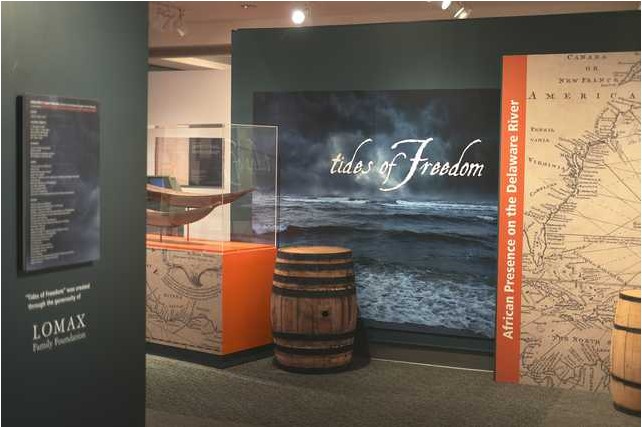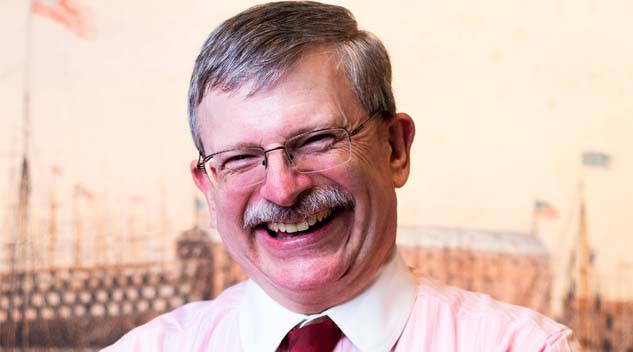#Peter #Seibert #Antiques #Arts #Weekly

Courtesy Independence Seaport Museum.
In late September, the Independence Seaport Museum (ISM) of Philadelphia received two substantial grants to fund new research in recognition of its work in preserving and sharing the history of the Delaware River waterfront. Both grants, one from the Pew Center for Arts & Heritage and the other from the William Penn Foundation, will support ISM’s forthcoming African American oral history project. Separately, the Naval History and Heritage Command awarded ISM its 2022-2023 Maintenance Excellence Pennant for work done to preserve Cruiser Olympia. ISM’s president and chief executive officer, Peter Seibert, via email provided some details of these significant developments to Antiques and The Arts Weekly.
Congratulations on the grants and the award. What was your reaction when you received word?
Thanks so much. I was over the moon, thrilled with the announcements. Our staff has worked so hard over these last few years, so to get the funding for this project as well as the acknowledgment for our prior preservation work…well…it was just incredible.
Can you brief us on what’s entailed with the Pew Center’s grant? And the William Penn Foundation’s grant?
Both grants support an incredibly exciting project to collect and preserve the stories of African Americans living and working along the Delaware River from the 1960s to the present. Paul Best, the project director and a team of oral historians will fan out across the region to document these stories and memories. Once collected, they will be made available back to the community through both an accessible online resource and also incorporated into a new exhibition.

“Tides of Freedom,” installation view. Courtesy Independence Seaport Museum.
For those not familiar with the ISM’s mission, tell us what it encourages visitors to discover about Philadelphia’s river history and what maritime artifacts it stewards.
We were founded in 1960 by a group of collectors anxious to preserve the history of the maritime world. That is a big goal, to say the least, and in the decades since, we have narrowed our focus to the history, people and environment of the Delaware River and its estuaries. With half a century of collecting already behind us, our collections already number thousands of artifacts and millions of pages of documents.
What’s in the initiative to collect oral histories from African American Philadelphians who lived and worked along the Delaware River in the mid to the late Twentieth and Twenty-First Centuries. And what’s the ultimate aim in collecting these stories?
The idea was born from a discussion with one of my board members, who noted that our exhibition “Tides of Freedom,” lacked stories by and about African American women. This gave me pause, and so we went back and looked at what other narratives we were missing. The role of the African American community in organized labor from the 1960s onward also was an important thread that wasn’t touched upon. Finally, I became curious about what happened to the African American neighborhoods that existed along the waterfront. Most of these residents were relocated in the 1960s-80s when US Route 95 cut the city off from the river. What happened to those people? These three areas have since become the primary targets for this project. It is an incredibly timely project since every day that goes by, mortality claims people who otherwise might be able to give a voice to these stories.
Your organization also received the US Navy’s Maintenance Excellence Pennant in recognition of work that was done to preserve the hull of Cruiser Olympia. Tell us a bit about the Olympia and the work that was done to make sure the vessel remains a highlight of Philadelphia’s riverfront.
During her active service in the US Navy, Olympia was manned by more than 400 crewmembers who worked to maintain and operate her. Today, our dedicated staff of preservationists, curators and historians works to keep that legacy going. Like an old house, Olympia is susceptible to water, both rusting the hull and infiltrating inside the ship. So much of our effort is put into preventing this from happening. Because it is protective work, the public does not see the impact, yet it is vital. These last two years, we have been working to clean and repair sections of the hull along the waterline where the rising and falling tide has caused rust. It’s tough work but really necessary.

Among the most important objects in ISM’s collection, the Cruiser Olympia. Courtesy Independence Seaport Museum.
What are some of the stories that Olympia has to tell?
The museum world is full of hyperbole, and I am no stranger to the trap of making it unique by saying it is bigger/better/older. However, in the case of Olympia, most of the hyperbole is fact. She is a bridge to me between the world of Nineteenth Century sailing ships and iron-clad monitors and the modern world. She burns coal and yet has masts. She has gun turrets that could shoot over the horizon and wooden paneled staterooms.
She led the US Navy to victory at the Battle of Manila Bay during the Spanish-American War, chased U-boats during World War I, provided medical help during the 1919 Spanish Flu Epidemic and brought the Unknown Soldier from World War I home to Arlington.
Most importantly, she connects us to a time when the United States wanted to establish its dominance economically and politically in the Pacific. If one wants to understand our interest in the region today, you only need to look at Olympia. That is pretty cool!

ISM visitors looking at an object in the exhibition “At the Water’s Edge.” Courtesy Independence Seaport Museum
How did you become interested preserving maritime history and what are your personal connections with Philadelphia?
My grandfathers were both engineers, and my great-great-grandfather ran on Mississippi river boats, so perhaps it is in my blood to see the importance of transportation — particularly on water — and its ties to the human narrative. American economic prowess comes directly because of the oceans, rivers and lakes that surround and connect it. So, when I look at our collections, I see a million stories for us to tell built upon the common theme of maritime history.
I also am a proud Pennsylvania boy, and although I have lived and worked all over the country, my roots are here in the Commonwealth. Thirteen generations of my family have been here so like a magnet, I had to come home.
You came aboard ISM just two years ago and word is that you are making transformative changes there from staffing to physical space changes to exhibitions. What is your vision for the organization in the next few years?
We have so much going on at the museum. Our staff has grown significantly, including an incredibly talented education and curatorial staff. We have been actively building our collection and acquired some incredible things that we are now bringing forward in a complete redo of our exhibitions. We are doubling down on the restoration of Olympia and have gotten this critical funding for the oral history project to tell the stories of African Americans along the waterfront. I have to say that I do not think there is any area of the museum that is untouched by the wave of changes and upgrades. It is a pretty exciting time!

“Mary (Peace)” by William Rush (1756-1833), Philadelphia, circa 1820s, pine, paint. Museum Purchase, 1883.001 Photo: Paolo Jay Agbay for the Independence Seaport Museum.
Are there any upcoming developments and exhibitions we should know about?
In the spring, we will be shifting our main entrance from the north side of the building to the south. This will give us a much more open and welcoming way face to the public. As part of that, we have pulled together incredible objects from the collection and are using them to create a new introduction to the museum. The heart of this exhibit will be the incredible ship’s figurehead carving by William Rush of Philadelphia. The carving is being installed at an angle as it was intended to be viewed. Having seen the computer-generated models…I can tell you it will be amazing. We also are bringing out newly acquired and infrequently exhibited objects to showcase them to visitors. I am excited to see it all when we are done in March.
—W.A. Demers




